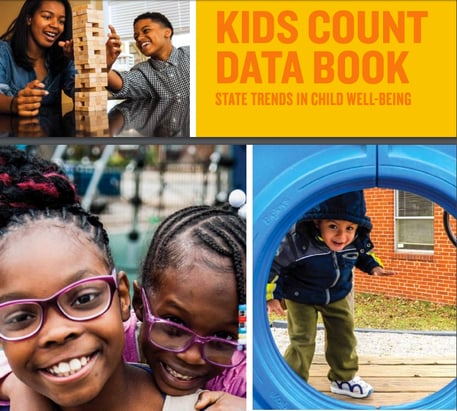Fantastic Data Sources on Child Well-Being
2 min read
Date Published: 08/31/2017
Last Updated: 11/10/2021
National Fatherhood Initiative Blog / Latest Articles
2 min read

When I say “kids count,” what pops into your head? Write it down before you continue to read this post.
If you wrote something like:
I won’t take offense…well, maybe a little offense, if you insulted my intelligence. (Only my wife and kids are allowed to insult my intelligence.)
Seriously, though, when I say “kids count,” I refer to the outstanding annual publication called Kids Count from the Annie E. Casey Foundation, arguably the most well designed publication on national and state level indicators of child well-being.
Notice that I use the term “well designed” to describe it. I use that term because Kids Count uses text and graphics to present an incredible amount of data in a way that’s easy to consume and use.
That’s why it can be so helpful in the context of serving dads. As you know, a host of markers of child well-being are positively influenced when children have an involved, responsible, committed dad and negatively influenced when children grow up without their dad.
Kids Count groups 16 key indicators of child-well being into these four categories:
The involvement of dads, or lack thereof, affects markers related to each of these categories of well-being.
Kids Count shows national trends over time in these indicators (i.e. whether they have improved or worsened) and ranks states from best to worse in each category.
But what’s even potentially better for you than the publication is the interactive Kids Count Data Center. It provides tons of data related to each of the 16 indicators for each state (not just the four categories). Further, you can drill down into the state level data by:
You can create charts of data on any indicator (e.g. children living in poverty) for a five-year period to reveal the trend in that data for the city, county, congressional district, or zip code your organization serves.
Like the publication, the Kids Count Data Center makes the data easy to consume and use. It’s easy to see the data that are available and to parse the data by state-level variables.
When it comes to serving dads, you can use either data source in as many ways as you can conjure, such as including data in:
These two excellent sources of data make a great complement to National Fatherhood Initiative’s Father Facts publication, now in its seventh edition. Father Facts remains the most comprehensive source of data and research on the effects of father absence and the benefits of father involvement.
How effectively do you use data on child well-being in your work with dads?
Have you imagined all the ways in which you can use data on child well-being?
Date Published: 08/31/2017
Last Updated: 11/10/2021
Download the ebook to learn how to create fatherhood initiatives that engage every sector of community life.

Train Your Staff
Fatherhood Programs
Fatherhood Data
© 2025 National Fatherhood Initiative®. All rights reserved.